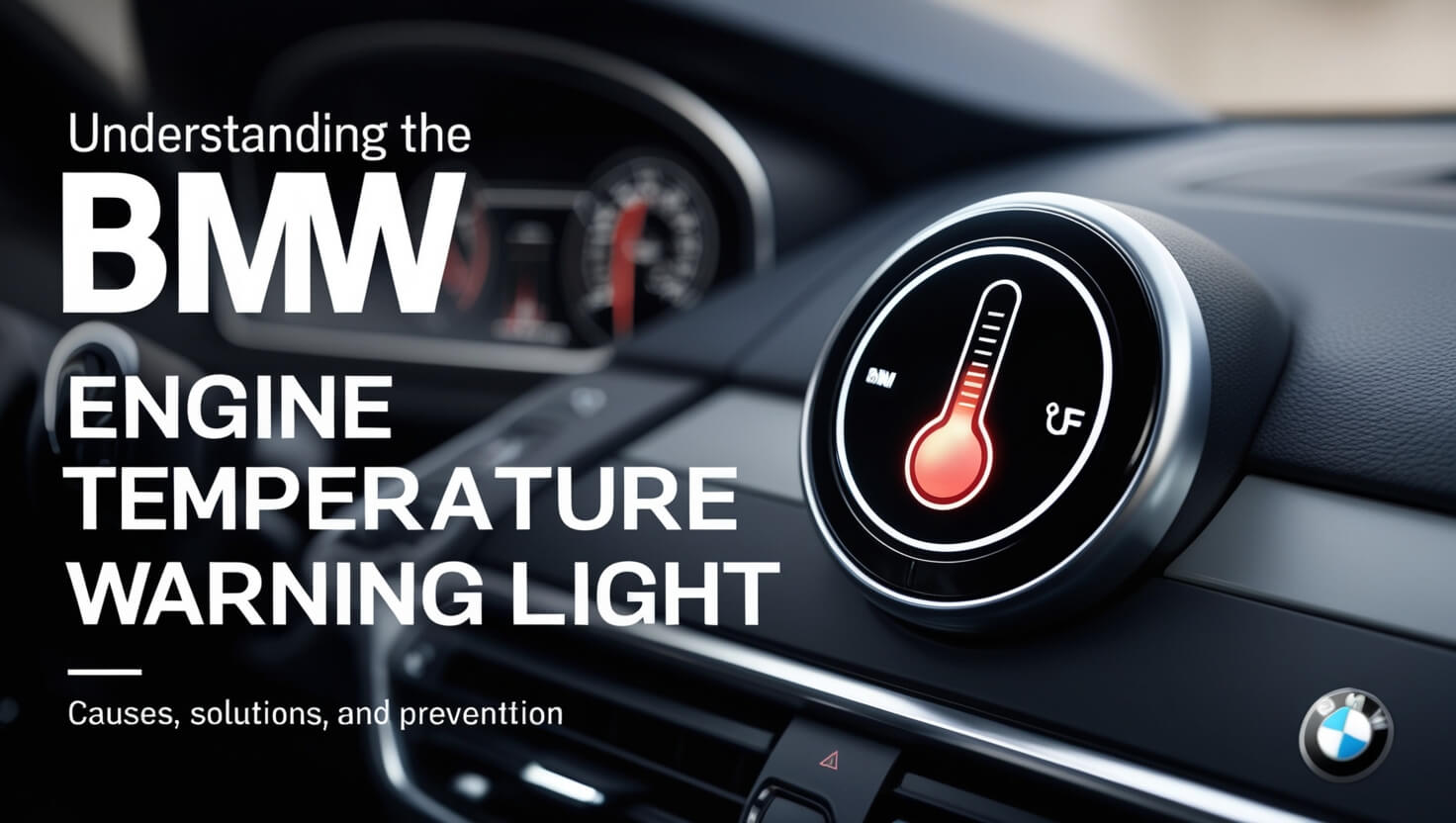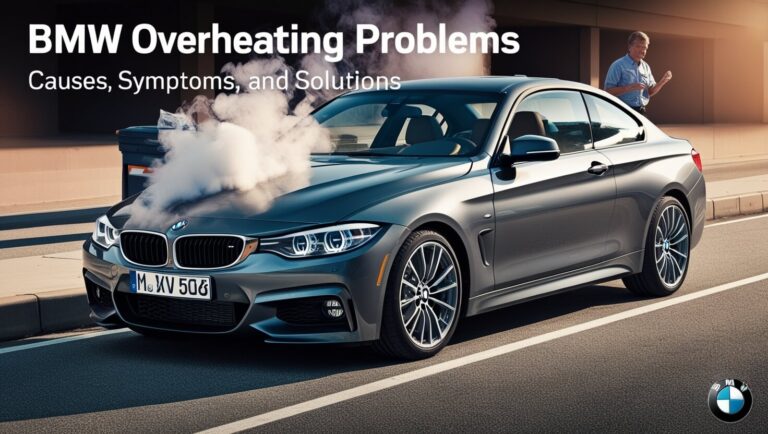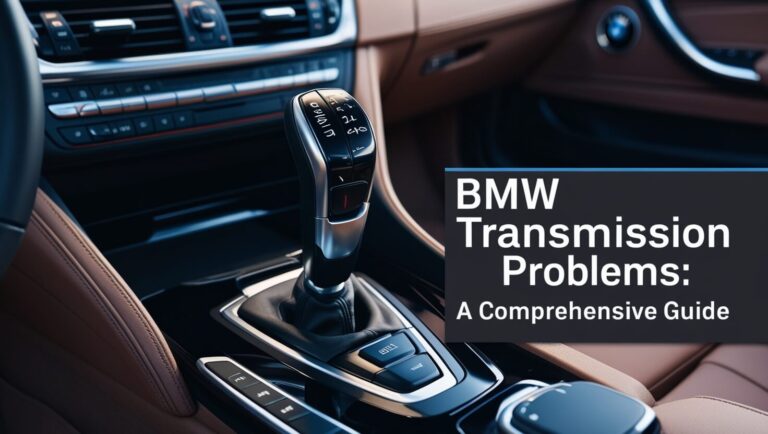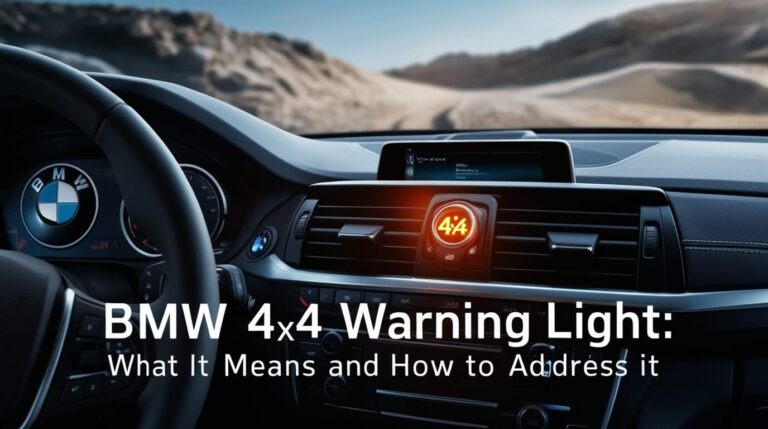
Is your BMW’s engine temperature warning light glowing? This dashboard alert indicates your engine may be overheating, which requires immediate attention to prevent serious damage. In this comprehensive guide, we’ll explore the causes behind this warning, what steps to take when it appears, and how to keep your BMW running cool.
What is the BMW Engine Temperature Warning Light?
The engine temperature warning light is a crucial indicator in your BMW’s instrument cluster. When illuminated, it signals that your engine is running hotter than it should, potentially risking damage if not addressed promptly.
Identifying the Warning Light on Your Dashboard
In most BMW models, the engine temperature warning light looks like a thermometer partially submerged in liquid. It typically glows red or orange when activated. Some newer BMWs may display a text message along with the symbol.
The Importance of Heeding this Warning
Ignoring the engine temperature warning light can lead to severe consequences. Overheating can cause:
- Warped cylinder heads
- Blown head gaskets
- Cracked engine blocks
- Total engine failure
These issues can result in costly repairs or even render your BMW unusable. That’s why it’s crucial to take this warning seriously and act swiftly when it appears.
Common Causes of BMW Engine Overheating
Several factors can trigger the engine temperature warning light in your BMW. Let’s explore the most frequent culprits:
Low Coolant Levels
Insufficient coolant is a common reason for engine overheating. Your BMW’s cooling system relies on a specific amount of coolant to regulate engine temperature effectively. When levels drop too low, the system can’t cool the engine properly.
Coolant Leaks
Leaks in the cooling system can cause coolant levels to drop rapidly. Common leak points include:
- Radiator
- Hoses
- Water pump
- Thermostat housing
- Expansion tank
Even a small leak can lead to significant coolant loss over time, eventually triggering the warning light.
Faulty Thermostat
The thermostat regulates coolant flow through the engine. If it sticks closed, it prevents coolant from circulating, causing the engine to overheat. Conversely, if it’s stuck open, the engine might not reach optimal operating temperature.
Malfunctioning Water Pump
Your BMW’s water pump circulates coolant through the engine and radiator. A failing pump can’t move coolant effectively, leading to localized hot spots and overall engine overheating.
Clogged Radiator
Over time, debris can accumulate in your radiator, restricting coolant flow and heat dissipation. This buildup can cause your engine to run hotter than normal, potentially triggering the warning light.
Failing Cooling Fan
The cooling fan helps dissipate heat from the radiator, especially when the car is idling or moving slowly. A malfunctioning fan can cause the engine to overheat in stop-and-go traffic or during extended idling periods.
Faulty Temperature Sensor
Sometimes, the problem isn’t with the cooling system itself, but with the sensor that monitors engine temperature. A faulty sensor might trigger the warning light even when the engine isn’t actually overheating.
Immediate Steps When Your BMW’s Engine Temperature Warning Light Illuminates
If you see the engine temperature warning light come on while driving, take these steps:
Safely Pulling Over
Find a safe spot to pull over as soon as possible. Continuing to drive risks severe engine damage.
Turning Off the Engine
Once safely parked, turn off the engine. This stops heat generation and allows the engine to start cooling down.
Checking for Visible Issues
Look for signs of coolant leaks under the car or steam from under the hood. Don’t open the hood if you see steam – the system is under pressure and could cause burns.
When (and When Not) to Open the Hood
Wait at least 15 minutes before opening the hood. This allows the engine to cool and reduces the risk of burns from hot coolant or steam. If you’re unsure or uncomfortable, it’s best to call for professional assistance.
Diagnosing the Issue: DIY Checks for BMW Owners
Once the engine has cooled, you can perform some basic checks:
Inspecting Coolant Levels
Check the coolant level in the expansion tank. If it’s low, this could be the cause of overheating. However, never add cold coolant to a hot engine – it could crack the engine block.
Examining for Visible Leaks
Look for wet spots or drips around hoses, the radiator, and other components of the cooling system. Any visible leaks need to be addressed before refilling the coolant.
Assessing the Cooling Fan Operation
With the engine running (assuming it’s safe to start), check if the cooling fan activates. In most BMWs, you should hear it running when the engine is warm and idling.
Checking the Temperature Gauge
If your BMW has a temperature gauge, watch it as the engine warms up. It should stay in the middle range. If it climbs into the red zone quickly, there’s likely a cooling system issue.
Professional Diagnosis and Repair for BMW Engine Overheating
While some checks can be done at home, resolving engine overheating often requires professional expertise.
The Importance of Specialized BMW Service
BMWs have unique cooling system designs. A mechanic familiar with BMW systems can diagnose and fix issues more efficiently, potentially saving you time and money in the long run.
Diagnostic Tools and Techniques Used by Professionals
Professional BMW technicians use specialized diagnostic tools to pinpoint issues. These might include:
- OBD-II scanners for reading error codes
- Pressure testers for finding leaks
- Infrared cameras for detecting hot spots
Common Repair Procedures for Overheating BMWs
Depending on the diagnosis, repairs might involve:
- Replacing the water pump
- Flushing and refilling the cooling system
- Replacing the thermostat
- Repairing leaks in hoses or the radiator
- Replacing the radiator fan
A skilled BMW technician will identify the root cause and recommend the most effective repair strategy.
Preventing Future BMW Engine Temperature Issues
Proactive maintenance is key to avoiding engine temperature problems in your BMW.
Regular Maintenance Schedule for Cooling System
Follow BMW’s recommended maintenance schedule, which typically includes:
- Regular coolant level checks
- Coolant flushes every 30,000 to 60,000 miles
- Inspecting hoses and belts for wear
- Checking the radiator for debris or damage
The Role of Quality Coolant in BMW Engines
Use only BMW-approved coolant in your vehicle. The wrong type of coolant can lead to corrosion and deposits in the cooling system, reducing its efficiency.
Importance of Addressing Minor Issues Promptly
Don’t ignore small problems like minor leaks or unusual noises. Addressing these early can prevent more serious (and expensive) issues down the road.
Long-term Consequences of Ignoring the Engine Temperature Warning Light
Failing to address engine temperature issues can have severe repercussions for your BMW.
Potential Engine Damage
Prolonged overheating can cause:
- Warped cylinder heads
- Cracked engine blocks
- Blown head gaskets
- Damaged pistons and bearings
These issues often require extensive repairs or even complete engine replacement.
Impact on BMW Performance and Longevity
Even if catastrophic failure doesn’t occur, ongoing temperature issues can:
- Reduce engine efficiency
- Increase fuel consumption
- Cause premature wear on engine components
- Decrease overall vehicle lifespan
Financial Implications of Delayed Repairs
Ignoring the warning light might save money in the short term, but it often leads to much higher repair costs later. A simple thermostat replacement is far less expensive than a new engine.
BMW Models Most Prone to Overheating Issues
While any BMW can experience cooling system problems, some models are more susceptible than others.
Common Problematic Series and Years
- E46 3 Series (1997-2006): Known for plastic cooling system components that degrade over time
- E39 5 Series (1995-2003): Can suffer from water pump and thermostat housing issues
- E60 5 Series (2003-2010): Some models prone to electric water pump failures
Model-Specific Cooling System Quirks
Different BMW models have unique cooling system designs. For example:
- Many modern BMWs use electric water pumps, which can fail without warning
- Some V8 models have separate cooling circuits for each bank of cylinders, adding complexity
- Turbocharged models often have additional coolers for the intercooler system
Understanding your specific BMW’s cooling system can help you anticipate and prevent potential issues.
Conclusion: Staying Cool Under Pressure with Your BMW
The engine temperature warning light in your BMW is a crucial safety feature designed to protect your vehicle from severe damage. By understanding its significance, knowing how to respond when it illuminates, and maintaining your cooling system properly, you can keep your BMW running smoothly for years to come.
Remember, regular maintenance and prompt attention to warning signs are key to preventing overheating issues. If you’re ever unsure about a temperature warning or any other dashboard alert, don’t hesitate to consult a professional BMW technician. Your engine’s health – and your peace of mind – are well worth the investment.
By staying informed and proactive about your BMW’s cooling system, you can enjoy the performance and reliability that make these vehicles so beloved by driving enthusiasts worldwide. Keep your BMW cool, and it will keep delivering the ultimate driving experience.






